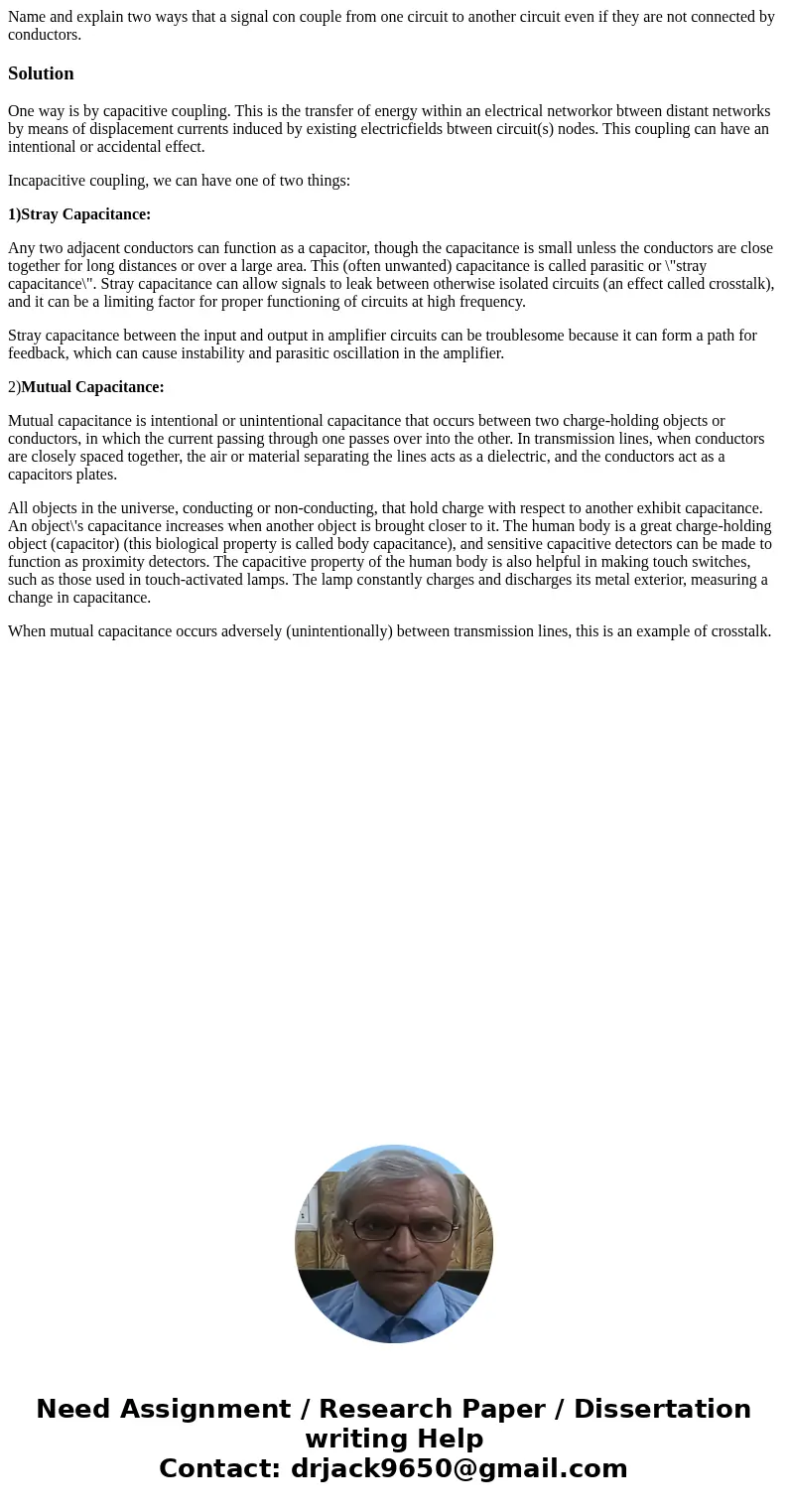Name and explain two ways that a signal con couple from one
Solution
One way is by capacitive coupling. This is the transfer of energy within an electrical networkor btween distant networks by means of displacement currents induced by existing electricfields btween circuit(s) nodes. This coupling can have an intentional or accidental effect.
Incapacitive coupling, we can have one of two things:
1)Stray Capacitance:
Any two adjacent conductors can function as a capacitor, though the capacitance is small unless the conductors are close together for long distances or over a large area. This (often unwanted) capacitance is called parasitic or \"stray capacitance\". Stray capacitance can allow signals to leak between otherwise isolated circuits (an effect called crosstalk), and it can be a limiting factor for proper functioning of circuits at high frequency.
Stray capacitance between the input and output in amplifier circuits can be troublesome because it can form a path for feedback, which can cause instability and parasitic oscillation in the amplifier.
2)Mutual Capacitance:
Mutual capacitance is intentional or unintentional capacitance that occurs between two charge-holding objects or conductors, in which the current passing through one passes over into the other. In transmission lines, when conductors are closely spaced together, the air or material separating the lines acts as a dielectric, and the conductors act as a capacitors plates.
All objects in the universe, conducting or non-conducting, that hold charge with respect to another exhibit capacitance. An object\'s capacitance increases when another object is brought closer to it. The human body is a great charge-holding object (capacitor) (this biological property is called body capacitance), and sensitive capacitive detectors can be made to function as proximity detectors. The capacitive property of the human body is also helpful in making touch switches, such as those used in touch-activated lamps. The lamp constantly charges and discharges its metal exterior, measuring a change in capacitance.
When mutual capacitance occurs adversely (unintentionally) between transmission lines, this is an example of crosstalk.

 Homework Sourse
Homework Sourse